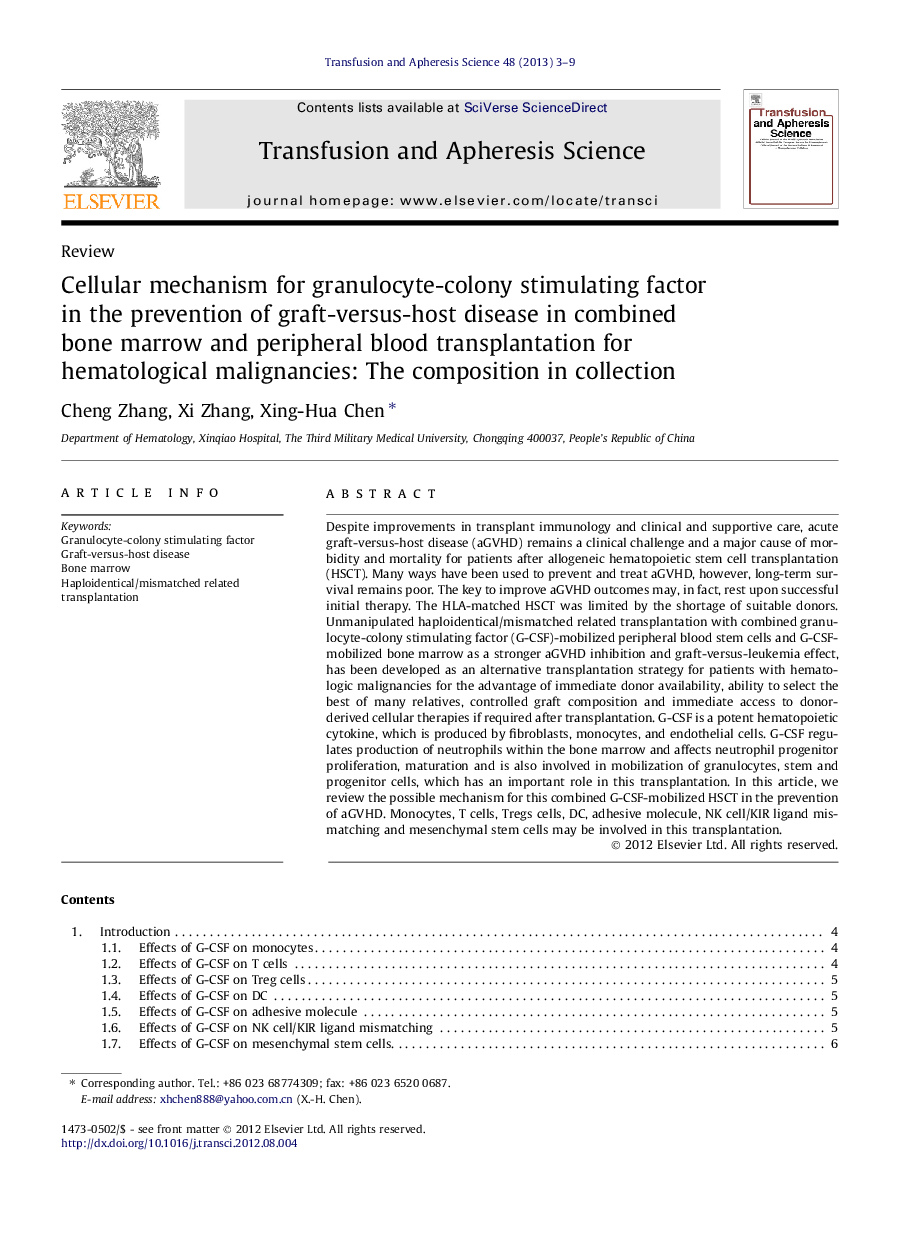| Article ID | Journal | Published Year | Pages | File Type |
|---|---|---|---|---|
| 3335598 | Transfusion and Apheresis Science | 2013 | 7 Pages |
Despite improvements in transplant immunology and clinical and supportive care, acute graft-versus-host disease (aGVHD) remains a clinical challenge and a major cause of morbidity and mortality for patients after allogeneic hematopoietic stem cell transplantation (HSCT). Many ways have been used to prevent and treat aGVHD, however, long-term survival remains poor. The key to improve aGVHD outcomes may, in fact, rest upon successful initial therapy. The HLA-matched HSCT was limited by the shortage of suitable donors. Unmanipulated haploidentical/mismatched related transplantation with combined granulocyte-colony stimulating factor (G-CSF)-mobilized peripheral blood stem cells and G-CSF-mobilized bone marrow as a stronger aGVHD inhibition and graft-versus-leukemia effect, has been developed as an alternative transplantation strategy for patients with hematologic malignancies for the advantage of immediate donor availability, ability to select the best of many relatives, controlled graft composition and immediate access to donor-derived cellular therapies if required after transplantation. G-CSF is a potent hematopoietic cytokine, which is produced by fibroblasts, monocytes, and endothelial cells. G-CSF regulates production of neutrophils within the bone marrow and affects neutrophil progenitor proliferation, maturation and is also involved in mobilization of granulocytes, stem and progenitor cells, which has an important role in this transplantation. In this article, we review the possible mechanism for this combined G-CSF-mobilized HSCT in the prevention of aGVHD. Monocytes, T cells, Tregs cells, DC, adhesive molecule, NK cell/KIR ligand mismatching and mesenchymal stem cells may be involved in this transplantation.
